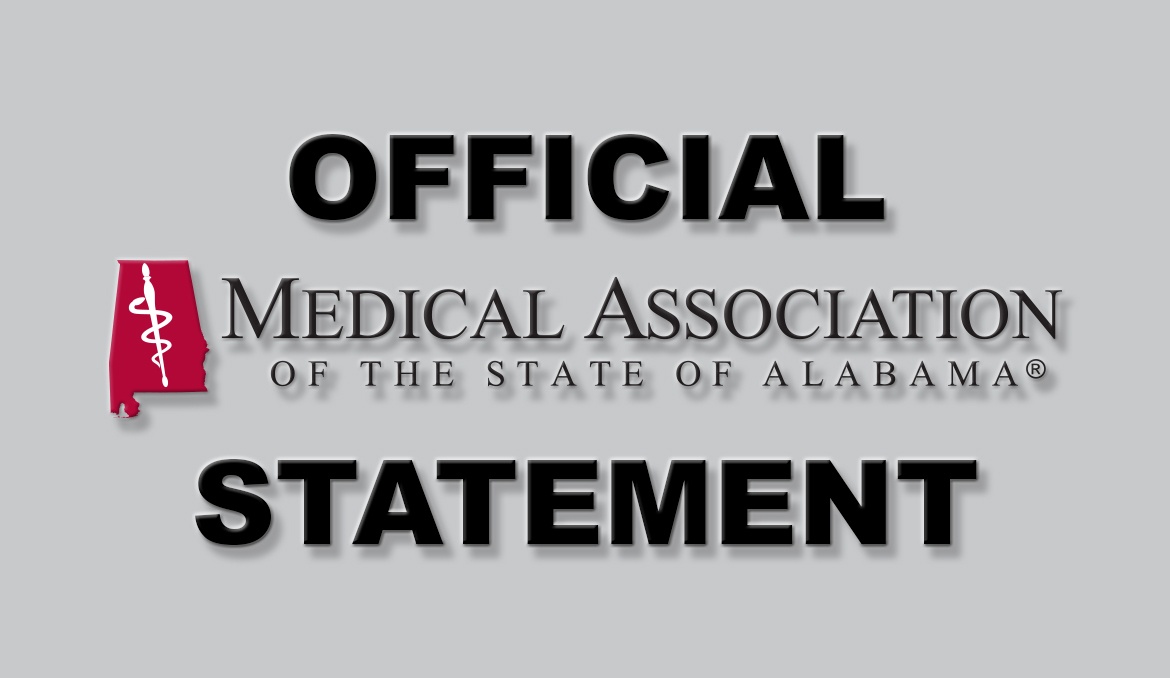Category: Uncategorized
-

Physician Groups Issue Joint Statement on Medicaid Funding Cuts
April 8, 2016 | MONTGOMERY – Without Fully Funding Medicaid, Patient Care at Risk With the passing of the General Fund budget, lawmakers appropriated $700 million for Medicaid next year, $85 million short of what is needed to fully fund Medicaid. Now the Medicaid Agency is left with the tough decisions of which programs to…
-

Official Statement on the Medicaid Funding Crisis
May 5, 2016 – Alabama’s physicians are urging our state lawmakers and Gov. Bentley to start now to find a permanent revenue solution to fully fund Alabama Medicaid before the next fiscal year. “Alabama already runs the most bare-bones Medicaid program in the country,” said Medical Association Executive Director Mark Jackson, “so to end this…
-

Statement Opposing VA Proposed Rule on APRNs
Alabama Delegation Supports AMA Resolution Opposing Proposed VA Rule UPDATE June 16, 2016: This week at the AMA Meeting the Association’s AMA Delegation joined others in support of a resolution opposing the proposed Department of Veterans Affairs rule that would expand the role of all Advanced Practice Registered Nurses, including nurse anesthetists. The AMA resolution…
-

Physician Groups Issue Joint Statement on 2016 Special Session Announcement
July 27, 2016 | MONTGOMERY – Our organizations applaud the Governor and are encouraged that he has taken the first step toward fully funding Alabama Medicaid by announcing his intention to call a special session. As for his proposal for a lottery, we support the passage of new revenue that will provide for a long-term…
-

Official Statement on Special Session/Medicaid Funding
Sept. 7, 2016 – The Medical Association of the State of Alabama would like to thank the members of the Alabama House of Representatives and Senate who supported the passage of the BP legislation today, which will provide much needed additional funding for Alabama Medicaid. We are pleased that our lawmakers have worked together for…
-
MACRA 911: Getting Started
On April 16, 2015, President Obama signed into law the Medicare Access and CHIP Reauthorization Act of 2015 (MACRA), significantly changing the health care financing system for the first time since 1965. The details of these sweeping changes are still being worked out, but all physicians should make plans for the new payment system. MACRA…
-
MACRA 911: MIPS vs. APM
While the ink is barely dry on the 962 pages of proposed regulations issued in April by CMS, the ripples of the Medicare Access and CHIP Reauthorization Act (MACRA) is already being felt throughout the health care industry. Keeping in mind this is still a proposed rule with comments to CMS due at the end…
-
MACRA 911: Will MACRA Destroy the Small Physician Practice?
The Centers for Medicare and Medicaid Services may be serving MACRA up as “part of a broader push toward value and quality,” but most small physician practices feel the federal regulation will more likely push them out of business, according to a new survey. In a May survey by Black Book Market Research of 1,300…
-
MACRA 911: Physicians Urge MACRA Delay
The Medical Association joined the American Medical Association and numerous physician groups to urge the Centers for Medicare & Medicaid Services delay implementation of the Medicare Access & CHIP Reauthorization Act of 2015, which replaced the Medicare Sustainable Growth Rate, and ensure new federal reimbursement programs “reward physicians for the improvements they make to their…
-
Could MACRA Be Delayed?
During a recent Senate Finance Committee hearing, CMS Acting Administrator Andy Slavitt hinted at the possibility the agency might delay the start date of the Medicare Access and CHIP Reauthorization Act, or MACRA. Under MACRA, CMS would begin measuring performance in 2017 for payments that begin in 2019 – a timeline that has been a…